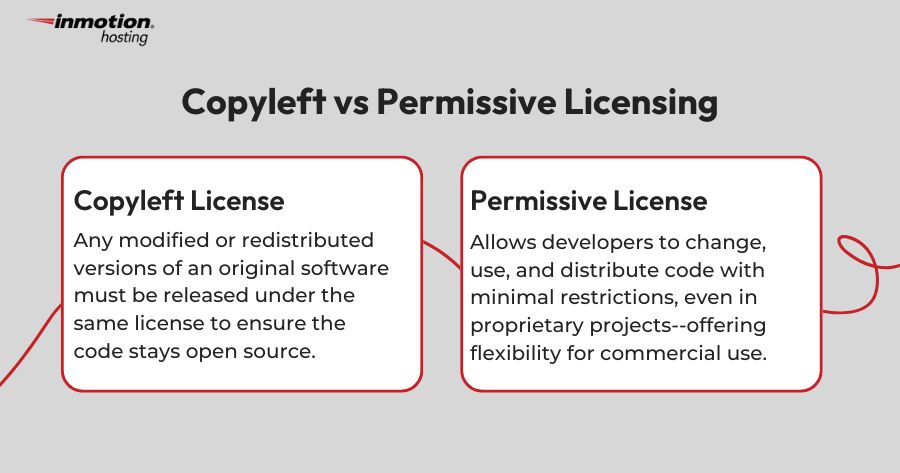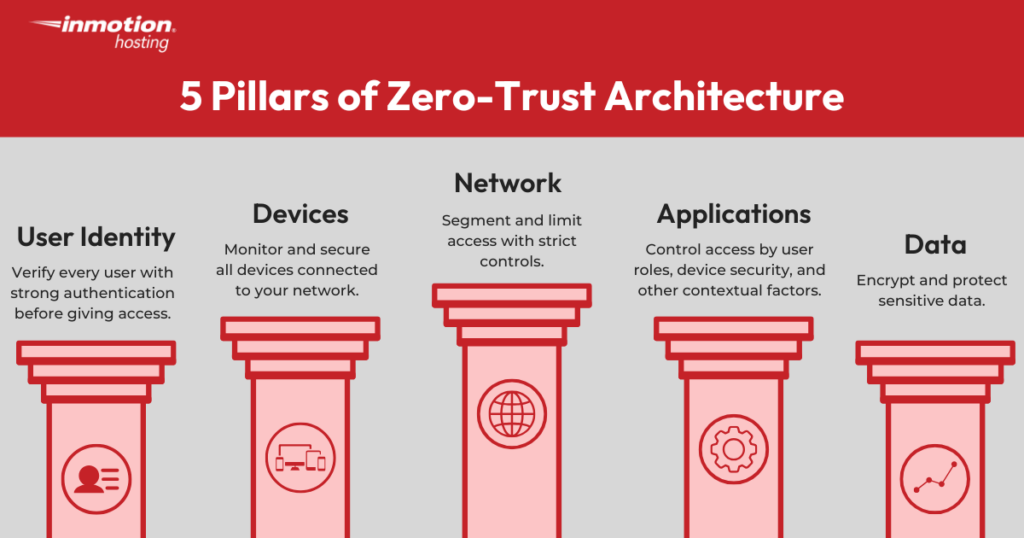Open supply software program (OSS) has lengthy been elementary to shaping the digital world as we all know it at this time. With its clear, collaborative, and cost-effective nature, OSS continues to achieve traction throughout industries, from enterprise IT options to cutting-edge synthetic intelligence (AI) purposes. As we step into 2025, a number of rising developments proceed to alter the trajectory of OSS, how we speak about it, and its rippling affect throughout industries.
On this article, we’ll discover the important thing developments and predictions shaping open supply software program in 2025, protecting the whole lot from AI developments to decentralized computing and safety enhancements.
The Evolution of Open Supply Licensing
As open supply software program grows, licensing fashions are evolving to deal with new challenges. Builders wish to hold their software program free to make use of, however additionally they wish to stop misuse. Many tasks rely upon unpaid volunteers, and funding by way of sponsorships and donations supply some help however isn’t at all times sufficient. On the identical time, huge tech firms are being profitable from OSS with out at all times giving again.
In 2025, discussions about moral licensing, monetization, and truthful utilization will intensify.
Moral Open Supply Licenses
Moral open supply licenses are new kinds of licenses that builders are creating to regulate how their software program is used. Conventional open supply licenses (like MIT, Apache, or GPL) enable anybody to make use of the software program for any objective, even when that objective is dangerous. Examples embrace navy weapons, mass surveillance, or human rights violations
Many builders don’t need their work used for these functions, in order that they’re writing new licenses that ban unethical makes use of. Examples of present etjocal licenses embrace the Hippocratic license, Do No Hurt License, and Anti-996 license.
Nevertheless, implementing moral use licenses continues to be hotly debated. Whereas some suppose these licenses are an effective way to make open supply extra accountable, others argue they violate the spirit of open supply.
In 2025, developer communities, like r/linux, actively debate whether or not moral restrictions defend important values or undermine the rules of open supply.


Stronger Copyleft vs. Permissive Licensing
The controversy between GPL copyleft licenses, which mandate spinoff works to be open-source, and permissive licenses like MIT and Apache will persist. This longstanding dialogue is central to figuring out builders’ freedom in utilizing open-source code.

Copyleft supporters advocate for person freedoms, whereas permissive license supporters fear that extreme guidelines might deter companies.
This debate will warmth up in 2025 with the rise of Cloud and AI adoption. Some OSS tasks really feel exploited by firms in each industries, who’re monetizing open supply code with little contribution to the group. This raises questions on whether or not extra tasks ought to swap to copyleft to guard themselves.
Coming into the Subsequent Part of AI
One huge change in synthetic intelligence (AI) is that open supply software program will assist make it extra moral and truthful. Proper now, many AI fashions are created by huge firms that hold their code and information secret. Thus making it exhausting to know the way AI fashions make selections. However with open-source AI, anybody can see how these methods work, examine for biases, and recommend enhancements.
Considerations with Open AI
AI isn’t good and may even be biased. This occurs as a result of AI learns from giant portions of knowledge that comprise bias, leaving it liable to societal prejudices. Predictive policing methods have proven this problem by disproportionately focusing on minority communities.
AI-generated code additionally presents different challenges:
- Information Supply Transparency. It may be troublesome to inform if the code is open supply, proprietary, or below a particular license. This creates a threat for the misuse of licensed code, which may result in infringement points.
- AI Misuse. Considerations about AI misuse by cybercriminals are rising. Whereas AI enhances web site creation, scammers use it to create fraudulent websites.
- Jailbreaking. Hackers additionally manipulate AI, or “Jailbreak”, to entry hacking directions and dangerous information.
The following part of AI will rely upon addressing these challenges.
A Rising Name for Transparency in AI
Many people are expressing their need for legal guidelines that guarantee AI methods are open and straightforward to grasp. The European Union and the U.S. authorities actively have interaction in discussions for rules that encourage extra transparency amongst AI firms.
Nonetheless, the U.S. is pushed to compete with China’s Deep Search know-how, even when it means overlooking or failing to grasp all of the related dangers.
The strain between nationwide safety and AI security highlights the concept open supply software program shall be important in shaping the way forward for AI growth. By nature, open supply software program encourages international collaboration and democratizes entry to AI know-how. The outcomes be sure that security analysis isn’t restricted to some entities.
Transparency and collaboration will assist AI evolve right into a useful instrument whereas decreasing bias and safety dangers.
Safety Enhancements in Open Supply Tasks
With OSS being extensively adopted, it shouldn’t be stunning that safety stays a high concern. In 2025, safety measures inside the OSS ecosystem will develop into extra sturdy, particularly in response to growing cyber threats.
Right here’s how safety is altering with the OSS group:
Provide Chain Safety
As cyberattacks on the provision chain improve, open supply tasks will implement higher dependency monitoring and vulnerability scanning.
For the reason that discovery of malicious code in XZ Utils, there was a renewed curiosity in Software program Payments of Supplies (SOBM) for OSS. That’s, taking stock of software program parts like frameworks, packages, and libraries. The goal could be to supply transparency and determine potential safety dangers. The OSS group in 2025 will probably step up the event of instruments and finest practices to trace OSS stock.
Zero-Belief Structure:
Extra OSS instruments will undertake zero-trust rules to boost safety at each stage. Zero-trust safety fashions undertake a “trust-no-one” coverage and supply extra authentication, verification, and least privilege entry earlier than connecting to a database or community.

A Zero-Belief mannequin shall be pivotal to OSS in 2025 as extra organizations undertake open supply software program, distant work environments, and cloud networks.
Decentralized Improvement and Web3
Decentralization is a serious theme in fashionable know-how, and OSS will play a vital position in Web3’s growth. Web3, constructed on blockchain know-how, promotes open, peer-to-peer purposes, eliminating the necessity for centralized authorities.
Right here’s how OSS is Shaping Web3:
Decentralized Finance (DeFi)
Open-source sensible contract platforms like Ethereum and Solana will energy the subsequent era of economic purposes. Each platforms have been instrumental to decentralized finance platforms previously. Their implications for the longer term embrace help for twenty-four/7 monetary transactions globally, permitting simpler growth for companies in eCommerce and digital provide chain administration.
Distributed Storage Options
OSS-based decentralized storage networks like IPFS will problem conventional cloud suppliers. In line with International Market Insights, the CAGR for decentralized storage is estimated at 22.4% between 2025 and 2034.
Decentralized storage networks retailer information throughout many various computer systems. Every bit is encrypted so solely the proprietor can put these information items again collectively to learn the file, providing a non-public and safe storage community in comparison with the cloud. It additionally has rising attraction for Web3 attributable to its resistance to censorship and integration with blockchain tasks.
Blockchain Governance
Decentralized Autonomous Organizations (DAOs) will use OSS to construct clear and community-driven governance fashions. To construct belief with the open supply group, DAOs will depend on OSS licenses for his or her software program. This can make open supply code accessible to builders and group members to assist enhance DAO functionalities and governance.
Different Open Supply Traits in 2025
Low-Code and No-Code Open Supply Platforms
The rise of low-code and no-code platforms has made software program growth accessible to a broader viewers. In 2025, open-source options to proprietary low-code options will acquire traction, and right here’s why:
- Improvement is Quicker & Simpler. Low-code presents drag-and-drop parts that make it extra accessible to builders and non-developers alike. Enterprise analysts, entrepreneurs, and entrepreneurs can construct purposes with out coding information.
- Customization & Flexibility: In contrast to closed-source platforms, open supply low-code instruments enable deeper customization. Companies can do extra with much less technical information, time, and cash.
- Integration with AI: AI-driven automation inside open supply low-code platforms will improve productiveness. Coders can unlock time from routine coding to give attention to technique, safety, and innovation.
Some notable OSS low-code platforms embrace Budibase, Appsmith, and Joget, all of that are anticipated to develop considerably in 2025.
Cloud-Native and Kubernetes Enlargement
Cloud-native computing has remodeled how companies deploy and handle purposes, with Kubernetes main the cost. In 2025, the adoption of Kubernetes and different cloud-native open supply applied sciences will proceed to develop as organizations search extra environment friendly, scalable, and resilient infrastructures.
Right here’s why Kubernetes will proceed to dominate in 2025:
- Multi-Cloud & Hybrid Cloud Assist: Kubernetes permits organizations to deploy purposes throughout a number of cloud suppliers, stopping vendor lock-in.
- Automation & Scalability: Kubernetes automates container orchestration, making it simpler to handle large-scale purposes.
- Robust Open-Supply Group: Backed by tech giants like Google, Purple Hat, and AWS, Kubernetes continues to evolve with fixed community-driven enhancements.
These strengths make Kubernetes a key instrument for cloud computing and open the door for brand spanking new applied sciences in 2025. Following are the impacts we are able to anticipate to see on cloud-native open supply.
- Kubernetes Edge Computing: As edge computing grows, Kubernetes shall be optimized for smaller, distributed environments.
- Serverless Kubernetes: Combining serverless computing with Kubernetes will enhance effectivity and price financial savings.
- AI-Enhanced Cloud Administration: AI-driven automation will assist optimize Kubernetes workloads for higher useful resource utilization.
Edge Computing and Open Supply
Edge computing, which processes information nearer to the place it’s generated relatively than counting on centralized information facilities, is gaining traction. In reality, international income is projected to succeed in $350 billion by 2027.
Open supply software program is essential on this shift, enabling real-time information processing and decreasing latency for purposes like IoT, sensible cities, and autonomous automobiles.
Right here’s how Open Supply is powering edge computing:
- Light-weight Kubernetes Distributions: Instruments like K3s (a light-weight Kubernetes distribution) are making it simpler to deploy containerized purposes on the edge.
- Open-Supply IoT Frameworks: Platforms like EdgeX Foundry and Eclipse IoT allow builders to construct safe and scalable IoT options.
- AI on the Edge: Open supply AI fashions have gotten optimized for edge computing, permitting real-time analytics and decision-making with out counting on cloud connectivity.
The Way forward for Open Supply Enterprise Fashions
Open-source software program is usually free, however sustaining and creating tasks requires funding. In 2025, open-source enterprise fashions will proceed to evolve, mixing free software program with monetization methods.
Rising OSS Enterprise Fashions
- Hybrid Open-Core Mannequin: Corporations supply free core OSS however cost for premium options or help (e.g. Purple Hat, Elastic).
- SaaS-Based mostly Open Supply: Many OSS tasks will supply cloud-hosted, managed companies as a income stream.
- Crowdfunding & Sponsorships: Platforms like Open Collective and GitHub Sponsors will assist maintain impartial OSS builders.
Conclusion
Open supply software program is not only a area of interest motion—it’s the basis of recent know-how. As we transfer into 2025, open supply developments will form AI, cloud computing, and cybersecurity. The growing adoption of OSS in enterprises, authorities, and rising applied sciences will reinforce its significance within the digital world.
With the rise of decentralized collaboration, moral licensing, and sustainable computing, the way forward for OSS appears to be like extra promising than ever. Whether or not you’re a developer, enterprise chief, or tech fanatic, staying knowledgeable about these developments will enable you to navigate the quickly evolving panorama of open-source software program.

